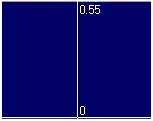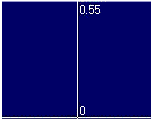Flux creep simulations:
Thin strip
with increasing transport current
The transport current through
the initially zero-field-cooled strip
increases linearly in time,
dI/dt=
0.001 Icvc / (2w), where 2w is the strip width;
Uc / kT = n = 5;
Common in distributions:
The distributions are qualitatively similar to
each other, and also to that expected for the Bean
model [PRB 48, 12893 (1993),
PRB 49, 9802 (1994)]
where the current density is largest in the flux penetrated regions
near the strip edges.
As the current increases, the flux penetrates deeper.
Finally, the central flux-free region
shrinks, and the current becomes distributed more uniformly.
Differences:
First, in the penetrated regions near the edge the slope of j(x)
is opposite in two different approaches.
Second, only in approach 1 there is a central peak (where B=0)
in j(x) at high currents.
These differences can be briefly explained as follows.
In the E-j approach, j(x) follows E(x)
and, thus, decreases monotonously
from the edges towards the center. In the flux diffusion approach,
however, one has v(j)=E/B, which means that
j tends to be larger where |B| is smaller.
In particular, j(x) is relatively small at the edges where
|B| is maximal, but divergent
in the annihilation zone where B=0.


